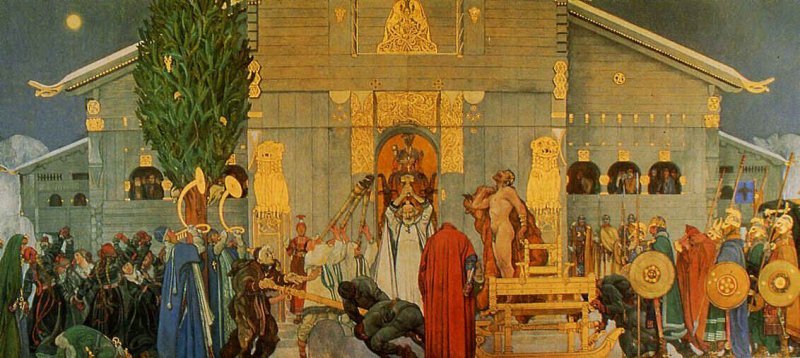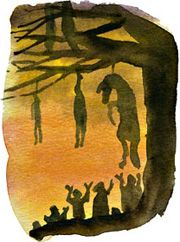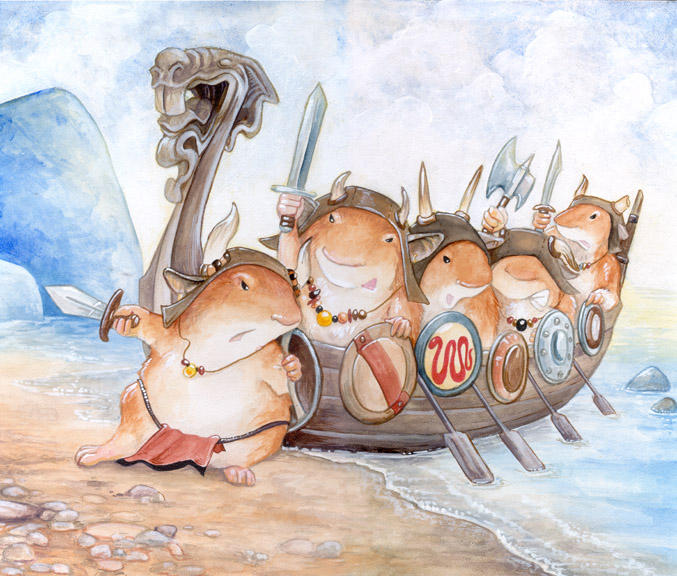Vikings in North America?
Not the football team
Space archeologist, Sarah Parcak may have found a Norse wine mecca in North America! According to a Norse saga, there was colony called "Vinland," which means land of wine. In this saga there is a place that is described as "warm enough to grow grain and grapes." Many scholars believed this place to be somewhere in North America. As Vikings sailed from Greenland they would write about each parcel of land they encountered. For instance, they described an area with lots of rocks and miles of beaches that sounds like modern-day- Labrador, the northern edge of Canada.
Back in the '60s some adventurers followed the Viking's descriptions and discovered an ancient site on the tip of the island of Newfoundland called L'Anse aux Meadows. This site dates back to 1000 AD, and is so far the only confirmed Norse settlement in North America. However, it's discovery didn't end the debate on where Vinland may be.
For the past 50 years, people have scoured the province of Newfoundland and Labrador - even looking as far south as New England - for Viking sites. Some people think that Vikings may have ventured as far as Minnesota. No, seriously. No proof has been able to support such notions that there were any Viking settlements in Minnesota however.
Sarah Parcak and her space archeologists took a different route. They started off using Google Earth to scan for anomalies in vegetation health, looking for circular or rectangular formations that wouldn't occur naturally and that might match patterns of historic, indigenous or Norse settlement structures. Through Google Earth they were able to narrow down 50 potential sites, but they needed better resolution to proceed. They ordered high-resolution aerial photographs and were able to narrow down 3 potential sited for them to dig. From there they were able to order high-resolutions multi-spectral satellite imagery that let them use chemical signatures on the ground. That final step helped them identify the two most promising sites.
In June of 2015, a six-person team started a dig far south of L'Anse aux Meadows. one of which was Frederick Scwarz, an expert with more than 30 years of experience working in eastern Canada who would be able to tell us immediately if they were digging in a historic or indigenous site. During the dig, they found a hearth and probably turf walls - "not typical structures for indigenous or historic cultures (at least not outside the Arctic)." Frederick told them that he ".... didn't know what he was digging anymore." He'd never seen anything like it - it was completely unfamiliar.
The experts told Parcak that if the site they were digging was an indigenous North American site, it would have flint. If it was historic European "... they would be able to fill buckets with ceramics." They weren't able to find either.
Meanwhile, the Vikings needed a lot of iron for their farming equipment and ships. Iron production was a major part of their culture - it's no coincidence that one of their gods, Thor, was a master smith. The Vikings wouldn't have settled anywhere where they didn't have a good source of bog iron, a favorite raw material. Bog iron gathers at the base of roots in swamps; it's rusty and crumbly until you roast off the impurities and smelt it down. Guess what the group DID find while digging. They found 18 pounds of glassy, blackened material, which they had analyzed by a Norse metallurgy expert. As it turned out, the material is evidence of bog iron roasting, the first phase in Norse iron production. No indigenous groups worked in metal in Newfoundland. Neither did any other known historic groups.
The site they found is called Point Rosee and it would've been a good place to settle. It has streams for fresh water and a nearby beach for fishing - not to mention a landing area for ships. Beyond that, the site is close to the only valley in Newfoundland warm enough for agriculture. Could this site have been a Norse settlement? The bog iron processing certainly suggests it's a possibility. At this point all it points out is that the site doesn't match other known cultures in the area; the only culture it matches at present is Norse. The site appeared to be larger than their first survey suggested, so it will take multiple seasons of excavation to understand the site's specifics.
Sources:
http://ideas.ted.com/inside-the-search-for-a-fabled-norse-site-with-the-help-of-satellites/
http://news.nationalgeographic.com/2016/03/160331-viking-discovery-north-america-canada-archaeology/




